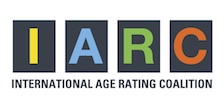PEGI uses a single set of criteria to determine the age rating of a video game, but it has two different rating procedures that are adapted to the needs of different business models:
Using the traditional method of pre-release verification:
Many console and PC games are still released as a physical product and sold via retailers. To ensure that these games always display the correct age classification on the box, a robust procedure is crucial:
- Prior to release, publishers fill in a questionnaire for every version of their product. This content assessment form enquires about the content of the product, looking at the possible presence of violence, sex, bad language and other audiovisual content that may be considered as not appropriate for all ages.
- Based on the responses from the publisher, PEGI's rating system automatically determines a provisional age rating with content descriptors.
- The PEGI administrators receive the game content from the publisher and thoroughly review the provisional age rating. NICAM takes care of the games rated 3 and 7, whereas the VSC Rating Board reviews the 12, 16 and 18 ratings.
- Depending on the review, the administrators approve or alter the provisional rating, and PEGI delivers a license to the publisher for the use of the age rating icon and the relevant content descriptor(s).
- The publisher is now authorised to reproduce the appropriate age rating logo and content descriptor(s) on the packaging or at the digital point of sale in accordance with the PEGI Labelling Guidelines and the PEGI Code of Conduct.
This traditional method is not at all practicable for purely digital storefronts that see thousands of new products enter the market (and even more products updated or changed) on a daily basis. A faster, more scalable solution, with the possibility of responding quickly to changes or errors, was developed in IARC:
Using post-release verification for digital products:

Thousands of new games and apps are released every day on digital storefronts for smartphones, tablets, PCs and consoles. IARC, a coalition of rating authorities from Europe, Australia, Brazil, North America, and South Korea, aims to provide a solution for this globalised market of digital games (downloads, apps as well as browser-based games).
Instead of having to administer their own rating systems, storefronts and platforms can use the established standards while complying with content classification requirements that are legally mandated in certain countries. Developers are relieved of having to go through multiple processes to obtain ratings for the different territories and storefronts. And consumers are presented with a consistently applied set of familiar and trusted ratings that reflect their local, distinct sensibilities about content and age appropriateness.
In terms of methodology, IARC is designed as a more flexible and tailormade procedure that can cope with the large numbers of new apps and app updates:
1. A publisher submits a game or app to a storefront for a digital release. As an integral part of that submission procedure, the publisher has to fill in the IARC questionnaire, which is a single set of questions about a product’s content and interactive elements. The questionnaire combines the classification criteria of the participating rating boards.
2. Upon completion of the questionnaire, the publisher immediately receives a license with age ratings of the participating rating boards. The classification process is cost-free. As soon as the game or app is released, the appropriate age rating is displayed in the storefront.
3. Administrators from IARC rating boards work together to check a robust cross-section of all classifications. A variety of tactics, including keyword search, top download checks, publisher and consumer requests, and others, are applied to ensure that age ratings are correctly applied. In case of an error, the incorrect age rating can be changed very quickly.